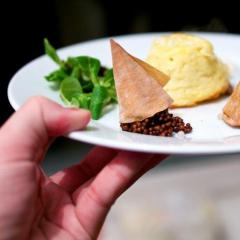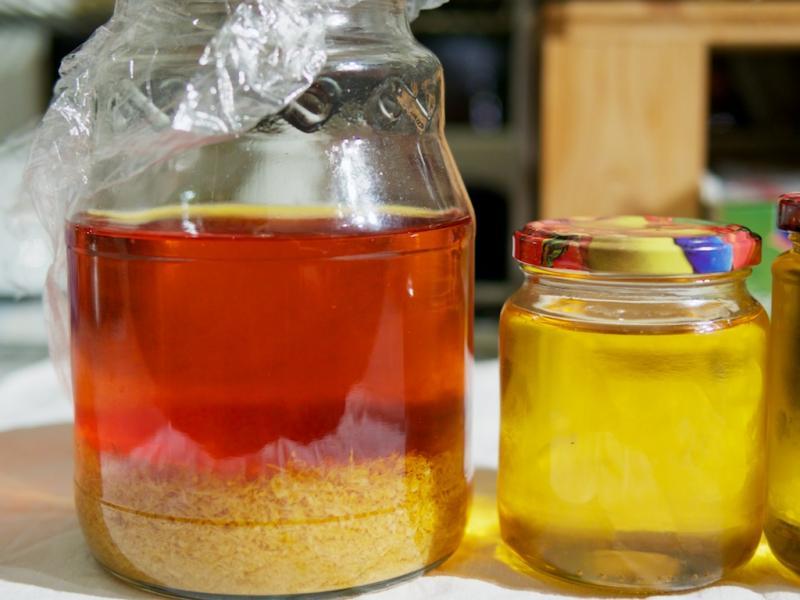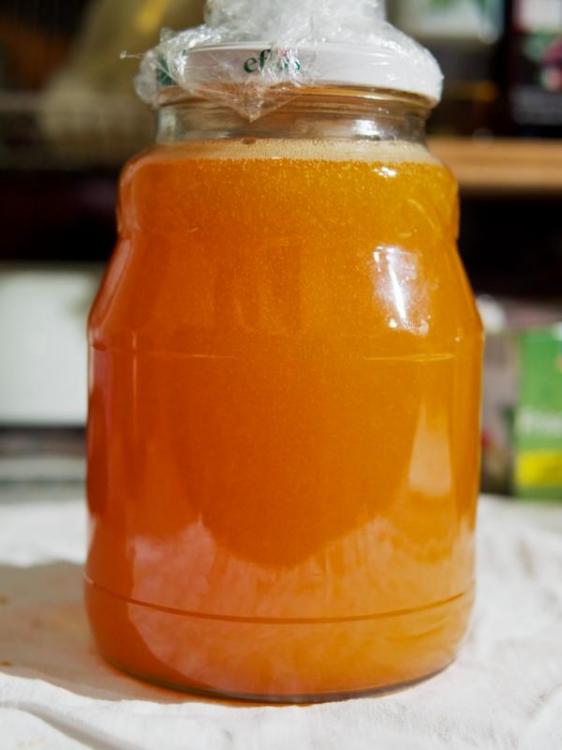-
Posts
346 -
Joined
-
Last visited
Content Type
Profiles
Forums
Store
Help Articles
Everything posted by pep.
-
The mother of a friend of mine is in Peru for the next three weeks. What are the best/most awesome ingredients/foodie things we should ask her to get for us?
-
Yeah, "traditional" is the better term. Anyway, I'd like a book with traditional recipes and some information on their cultural background. It does not necessarily have to be all from one region, but I should be able make informed choices based on where a recipe comes from (regionally, socially etc.). (What I don't want is modern(ist) Mexican cooking. I'm sure that those would be great, but I'd like to get a basic grasp of traditional cookery first. Then I can do my own riffs and modernizations if I think them appropriate or necessary.) Please remember that I'm from Austria and pretty much the only thing anyone here knows about Mexico is that we once sent an emperor over there ... unsuccessfully ;-) OK, I'm joking a bit, but most "Mexican" restaurants here serve a cartoonish TexMex fusion. I don't think anyone among the guests (including myself) can appreciate the subtleties of a meal based on a single regional cuisine. Anyway, I don't really read Spanish. I could probably do a simple recipe from a Spanish book, but any more information beyond the basic procedure would probably be lost on me.
-
Yeah, but which ones should I get? The old books (Cuisines of Mexico, The Tortilla Book, Mexican Regional Cooking) or the new compilation The Essential Cuisines of Mexico? Or The Art of Mexican Cooking?
-
Oh, I can. Which titles in particular?
-
Not even in all western traditions. No Austrian Rindssuppe (beef broth) is complete without large Fettaugen ("fat eyes", i.e. little puddles of molten fat floating on top of the soup).
-
In the near future, a friend and I would like to do a Mexican themed dinner party. Any tips for internationally available Mexican cookbooks? I'd like something as "authentic" as possible (whatever that may mean ;-) – I should be able to get various dried chiles and other ingredients at the two Mexican supermarkets here in Vienna. Is Authentic Mexican (20th Anniversary Ed) by Rick Bayless any good? His name does crop here quite often, but judgements regarding authenticity seem to be mixed ...
-
For the first time ever, we got Meyer lemons over here in December. Among other things, I made "Meyerello", i.e. limoncello. Everything fine so far, except that I used unrefined (well, at least not totally refined) sugar. At first I didn't notice anything, but there is some brown gunk floating in my beautiful limoncello. It seems mostly suspended, but with tendency to accumulate more at the top of the bottle than at the bottom. Can I assume that there are just the impurities from the semi-brown sugar? I used 96 % alcohol, diluted 1:1 with distilled water (+ 400 g sugar to the 2 l of liquid). At that alcohol concentration, I don't think anything should be growing in there, no? (Plus it's happened in all eight bottles.)
-

Polyscience Sous Vide Toolbox (formerly known as SousVide Dash)
pep. replied to a topic in Cookbooks & References
It is still a great app, though. The best SV app, actually. -
My German is far from being enough to translate, but Google did a reasonable good job. Good enough that I really think I'llbe able to try this. Thanks...looks fabulous! Thanks! Be sure to let me know how it turns out. If you are not sure about some ingredients or preparation steps, feel free to ask me. Unfortunately, multilingual WP blogs are kinda hard to set up, otherwise I'd translate the recipes at least.
-
Actually, irradiated food is seen as a US thing in (at least this part of) Europe. Only dried spices and herbs may be irradiated at all and it has to be labeled as having been treated with ionizing radiation. Other European countries allow more types of food to be treated this way, but there's a lot of controversy about it.
-
Already bagged.
-
Could you post some real-life photos, please?
-
Dear Nickrey, Don't be offensed but "resolution" and "accuracy" are totally different things. There are 100 of pages available on internet explaining the difference. To sum up : accuracy, resolution, and precision are easily confused parameters used to describe the performance a system is capable of. Resolution is simply the smallest change that can be measured. In the case of Sousvidechef's temperature sensors, the resolution would be how small of an increment of temperature change can be detected by the sensor. Vac-Star is misleading you mentioning resolution instead of accuracy, what is important to know for the end user is the accuracy, only. I reread the mail I got from the Vac-Star contact and he did in fact say "internal resolution" ("interne Auflösung") when referring to the 0.0625 °C. The phrase "internal accuracy" was a mistranslation on my part, I actually switched his words around ("Genauigkeit von 12 bit", i.e. "accuracy of 12 bits", vs. "interne Auflösung von 0.0625 °C"). Thanks for the link to the datasheet, apparently I missed that when googling. I do think that their product description on the web is somewhat misleading, because they talk a lot about temperature stability (+/- 0.05 °C) and resolution (0.1 °C), insinuating that accuracy is in the same league.
-
Has anyone tried cook & chill with tender vegetables? I'd like to prepare some asparagus a day before and then just gently heat it up to 70 °C or so. Will that work or am I better of doing it completely fresh? I have done c & c with root vegetables before (with excellent results), but never something tender like asparagus. My main concern is not the actual cooking time, but the preperation/bagging of the asparagus. I'm cooking dinner for three other foodbloggers on Thursday and I'll only have about an hour between coming home from work and the time the guests are expected to arrive.
-
Vac-Star has put out the Sous-Vide Chef II which addresses some of the shortcomings of the first version (namely the mechanical relay has been replaced with a SSR). I questioned them about the temperature sensor and got a very quick and open response: They are using a DS18B20 (a semi-conductor with a resolution of 12 bits). Its internal accuracy is supposed to be +/- 0,0625 °C. Could someone with the technical background verify that the sensor technology is good in the long run? I assume that there will be no way to calibrate the device outside the factory.
-
I've tried pressure-cooking coriander seeds with vinegar and some salt (and a bit of water) yesterday, but after cooking the seeds twice for an hour each, they are still a bit crunchy. I will try another two hours today, but it may well be that the structural material of the seeds (cellulose?) doesn't break down at all.
-
It's part of a loose series of meals in which a group of friends comes together every other month or so. A friend and I decide in advance what the theme for the next meal is going to be and we usually discuss menu ideas together, although each has authority over their own dishes. The whole thing started out as competition between traditional and modernist techniques for Tafelspitz, so there is some expectation (or at least acceptance) that geeky things will happen/be served. Thus far, themes have either been a specific type of protein (pork, lamb, game, fish) or geographic (e.g. Italian). I try to challenge people a bit, but not too much (i.e. no offal, no snail caviar). Sometimes it works (like the beetroot sorbet we had in March), sometimes it doesn't (Styrian pig's feet soup - very traditional, BTW, but too far out of their comfort zone for some of the guests). It may be an Austrian thing, but there is a certain expectation here that a feast includes at least one kind of dead animal. Vegetarian dishes are something you eat if there's no meat available. ;-) We've planned the menu, BTW, and I want to thank all of you for the very inspirational suggestions! I'll post details once the meal is done, because we'd like to play a bit with people's expectations. It's unlikely that any of the guests are going to read this thread, but I can't be totally sure, either.
-
I've made several variations on the pressure cooked vegetables (including the original MC carrot soup) in the past, so I'm not sure I want to do it again for the same people, but if the broccoli version has a great color, I might still try it. (The color of the carrot version is so-so, and my pressure cooked beets didn't look tasty at all - all the red was gone, leaving a murky brown.)
-
Thanks for the reminder, I didn't even think of that aspect at the moment (I knew about the whole rennet thing, but since I normally don't care for strictly vegetarian dishes, I didn't think about it all). Yes and no. Yes, the food has to taste good, but your friendly neighborhood vegetable curry won't cut it for the feel of these meals. The standard for these feasts is five to six courses (including cheese and sorbet interludes). The things mentioned in the original post are not meant to be all implemented (or indeed any of them), it's just what was in my head when I wrote the post. But I have to find some idea to develop the menu around. Ah, no, I don't have that (or indeed anything vegan). Unfortunately, it's rather unlikely that I'll find it in a library around here (Austria).
-
The duck egg/salad combo sounds nice. However, I'm not sure if I can get duck eggs easily. Do they taste very different from chicken eggs? Besides that, I'd be interested in the run-down of the recipe.
-
We are doing a vegetarian feast for (probably) around 20 people at the end of April and I'm still looking for ideas for the courses. Things should have a "wow" factor as most guests are a bit wary regarding the vegetarian theme. Currently, the following ideas are floating around in my head (without having coalesced into distinct dishes): Pressure-cooked mustard seeds as "caviar" (possibly with sour cream and potato soufflé)Marmite consommé (H.B.)Leek "bone marrow"Vichysoisse (but it may be too cold still for this to be a good choice)Potato goulashMaybe some real (fish-friendly harvested) char caviar as contrast/surprise after the fake oneAs you can see, things it needs some structure and a killer idea (which is currently eluding me). Any suggestions?
-
what you are most likely encountering is precipitated pectin. the main reason the pith is removed from the peels is because of pectin and not the bitterness that people usually site. peels also shouldn't be over steeped. the oils are easily soluble so infusing longer just means more pectin. so just let it precipitate and rack it off into a another jar. Ah, that explains the weird floating glitter. However, there is also some sugar crystallization occuring, I've noticed relatively large crystals that have formed at the bottom of the oringinal jar (I only noticed this after I had started bottling, so it will be getting a bit messy - lots of really small bottles). Thanks!
-
A few days after sugaring my bitter orange liqueur, I've noticed that the sugar has started to crystallize not only at the bottom, but there seem to be tiny crystals floating around, too. Are the oil<br />droplets acting as seeds for the sugar crystals? Otherwise it seems weird because the syrup stayed liquid for more than a month even in the fridge.
-
I just went on with it yesterday. I used the bitter orange syrup I had left over from candying a bunch of peels, for that extra bit of orange flavor Before the whole filtering and mixing step: The final liqueur: I used one liter of 96 % by volume neutral grape spirit and the peels of 1 kg of Seville oranges. After filtration (and the resulting evaporation loss), I had about 750 g of liquid (wasn't able to measure the volume) and about 800 g of syrup (I've got really no idea what brix, but it did not crystalize even in the fridge, so probably not too high). I was not able to taste the liqueur yet as I'm still healing after tooth surgery, it may be a bit on the sweet side. But oh boy, did it smell great!
-
If your fridge keeps 4 °C, or close to it, most of the time your beet root puree should still be fine. If your fridge is more than two degrees or more warmer for a significant amount of the time it might not hurt to be careful. It has been in the coldest part of the fridge, so the temp should not have strayed to far from 4 °C, but I guess I'll just throw it out. It was a side product of a beet root sorbet I made, so I'm not too invested in it. Besides, while it tastes nice, it does not look so great. Apparently, the betalains are completely destroyed by the pressure cooking process.




